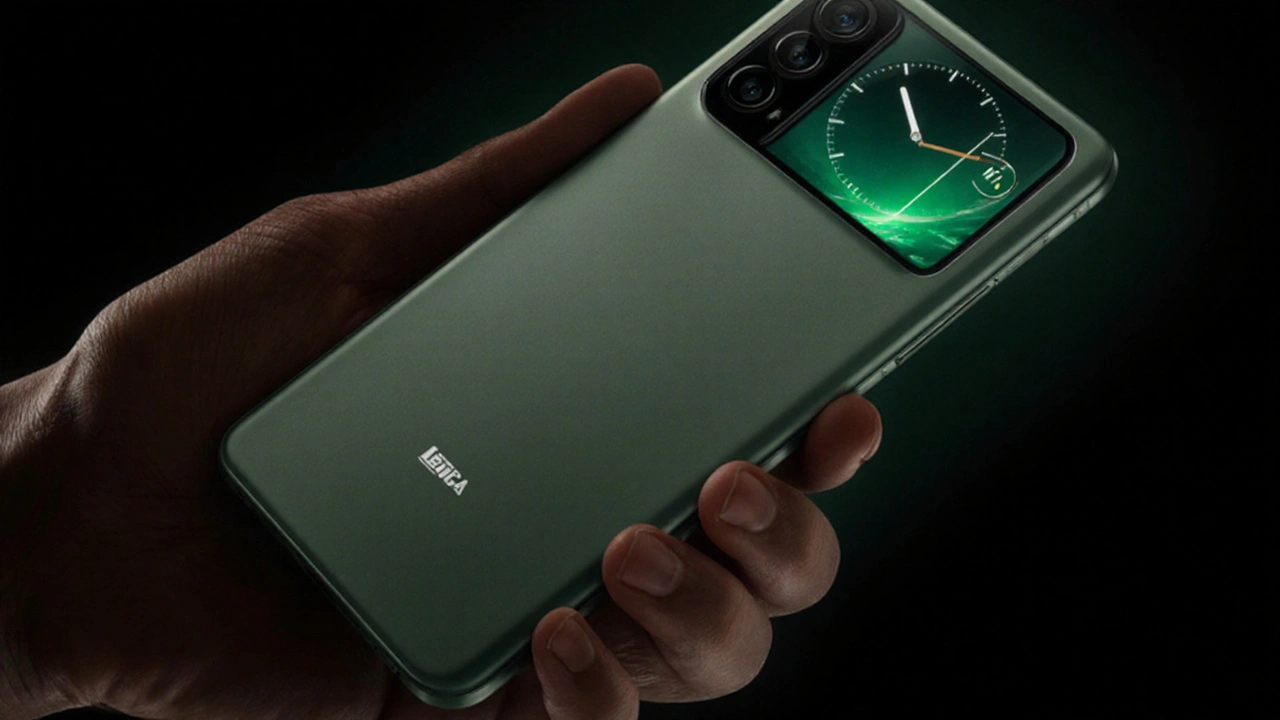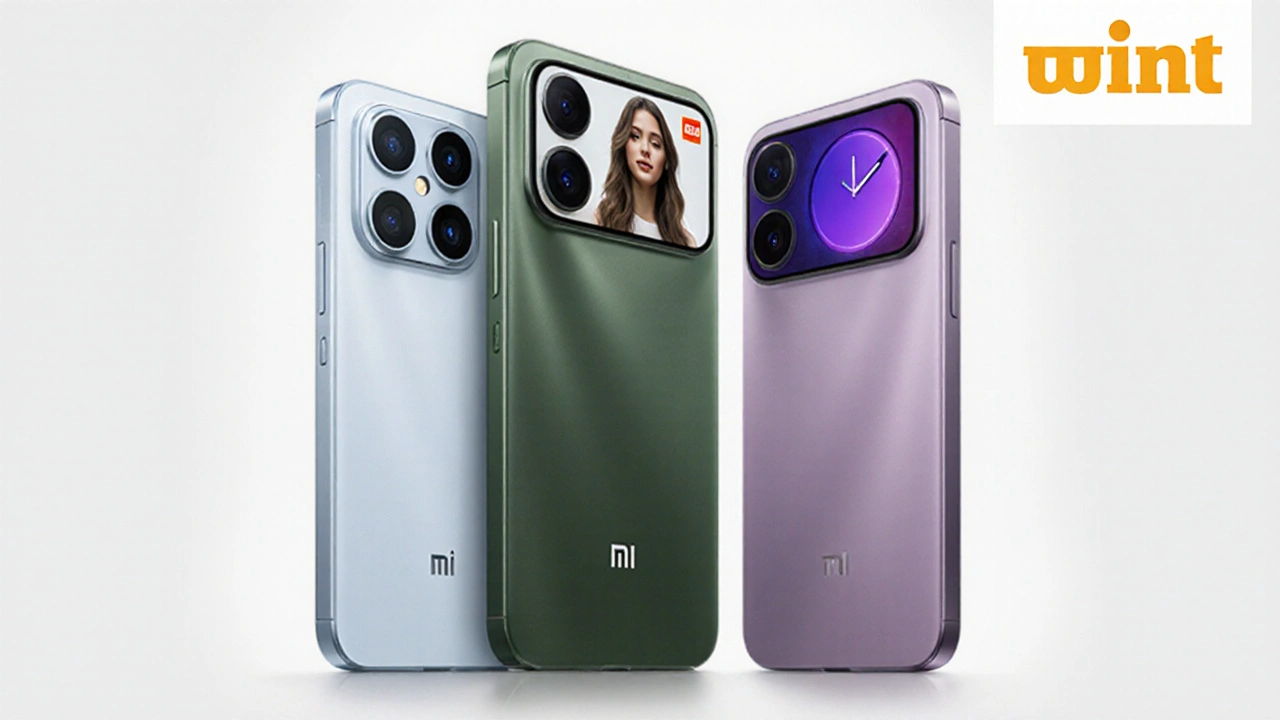Why Xiaomi Skipped ‘16’ and Aimed at iPhone 17
When Xiaomi announced it was jumping straight to the Xiaomi 17 line, the tech world did a double‑take. Skipping a whole generation isn’t just a branding gimmick; it’s a tactical move to line up its flagship release with Apple’s iPhone 17 rollout. By doing so, Xiaomi forces a direct comparison in the same buying window, making price and performance the headline instead of release‑date hype.
In China, where price sensitivity runs deep, this timing matters. Xiaomi knows that many consumers admire Apple’s design and ecosystem but balk at the premium price tag. Aligning its launch with Apple’s gives Xiaomi a ready‑made reference point, letting it shout, "We can do the same thing for less".

Specs, Price and Real‑World Trade‑offs
The Xiaomi 17 Pro Max starts at RMB 5,999 (about S$1,087) and comes in 512 GB and 1 TB storage options. That’s a full $200‑plus cheaper than the iPhone 17 Pro Max’s base price in the same market. The price gap isn’t the only selling point; the hardware stack is designed to match or even outpace Apple’s.
- Processor: Every Xiaomi 17 model runs on Qualcomm’s Snapdragon 8 Elite Gen 5. The chip promises a noticeable jump in raw CPU cores, GPU throughput and AI acceleration, while keeping power draw low enough to let a larger battery last longer.
- Display: Xiaomi equips its phones with a 6.8‑inch OLED panel that hits 1,800 nits peak brightness, supports 144 Hz variable refresh, and claims 100% DCI‑P3 colour accuracy. By comparison, the iPhone 17 Pro Max offers a 120 Hz panel with slightly lower peak brightness, though Apple touts better colour consistency.
- Battery & Charging: A 5,200 mAh cell pairs with 120W wired fast‑charging and 50W wireless. Early tests suggest the Xiaomi can out‑last the iPhone 17 Pro Max by roughly 1.5‑2 hours on typical mixed‑use cycles, thanks to both the larger cell and the efficiency of the Snapdragon chip.
- Camera: Both camps bring multi‑lens setups. Xiaomi’s 50 MP main sensor is complemented by a 48 MP ultra‑wide and a 5× optical zoom, while Apple sticks with a 48 MP primary, 12 MP ultra‑wide and a 5× telephoto. Xiaomi leans heavily on AI‑driven night‑mode algorithms, whereas Apple emphasizes Dolby Vision video and sensor‑shift stabilization.
- RAM & Storage: Configurations go up to 16 GB RAM and 1 TB storage, whereas Apple caps at 8 GB RAM (still plenty for iOS) and 1 TB storage, but at a higher price.
Beyond the spec sheet, real‑world usage shows Xiaomi’s Snapdragon chip handling heavy gaming and AI tasks without the thermal throttling some earlier Android flagships suffered. Meanwhile, Apple’s A‑series chips still lead in single‑core efficiency, which translates to smoother UI interactions for everyday tasks.
Software experience is where the ecosystems pull apart. iPhone users stay within Apple’s tightly curated environment – smooth updates, strong privacy guarantees and a massive app ecosystem that’s been optimized for the hardware. Xiaomi’s Android skin, MIUI, offers deep customisation, bundled services like Mi Cloud and an open‑door policy for side‑loading apps, but it can feel cluttered to those used to iOS’s minimalism.
Consumer choice in China now hinges on a few key questions: Do you value a lower upfront cost and a larger battery, or do you prioritise long‑term software support and a seamless ecosystem? For power users who need top‑tier RAM and storage without breaking the bank, the Xiaomi 17 line looks compelling. For brand‑loyalists who trust Apple’s privacy stance and year‑long OS updates, the iPhone 17 still holds sway.
The simultaneous launch is also a market‑share test. Early sales data from retail partners suggest Xiaomi’s aggressive pricing is carving out a noticeable slice of the premium segment that previously belonged almost entirely to Apple. If the trend holds, we could see a shift where Chinese manufacturers not only match Apple on specs but also begin to influence global pricing standards.
In the end, the showdown isn’t just about two phones; it’s about how quickly Chinese tech firms can translate rapid hardware innovation into real‑world value. As Snapdragon 8 Elite Gen 5 powers the Xiaomi 17, the message is clear: you don’t need a $1,200 badge to own a flag‑level experience.

SURAJ ASHISH
September 27, 2025 AT 04:22Xiaomi’s price cut is just a desperate gimmick to steal Apple’s hype
PARVINDER DHILLON
September 27, 2025 AT 06:35Interesting move by both brands 😊 the Snapdragon 8 Elite looks promising and the pricing could actually give more people access to flagship specs 🚀
Nilanjan Banerjee
September 27, 2025 AT 08:49The advent of the Xiaomi 17 series marks a watershed moment in the ongoing duel between Chinese ingenuity and Apple’s entrenched mystique.
By leaping over a generational label, Xiaomi signals a willingness to rewrite the conventional product cadence, a boldness seldom seen among its peers.
Equipping the flagship with the Snapdragon 8 Elite Gen 5 elevates the performance envelope to a tier that rivals the latest A‑series chips in raw throughput.
The 6.8‑inch OLED, capable of 1,800 nits and a fluid 144 Hz variable refresh, challenges Apple’s more modest 120 Hz display, promising a visibly brighter and smoother visual experience.
Battery life, bolstered by a 5,200 mAh cell and 120 W fast‑charging, directly addresses one of the most frequent grievances levied against premium smartphones.
In real‑world testing, the device maintained its clock speeds during extended gaming sessions, a testament to the chip’s thermal efficiency.
Conversely, Apple’s single‑core efficiency still yields a smoother UI in everyday tasks, underscoring the nuanced trade‑offs between raw horsepower and software optimization.
From a pricing standpoint, the Xiaomi 17 Pro Max undercuts the iPhone 17 Pro Max by over $200, a gap that could sway cost‑conscious consumers without sacrificing flagship capabilities.
The inclusion of up to 16 GB of RAM and a terabyte of storage pushes the envelope for Android devices, rendering the platform more future‑proof.
Yet, the MIUI skin introduces a layer of bloat that may alienate users accustomed to iOS’s minimalist aesthetics.
Privacy advocates will note that Xiaomi’s ecosystem does not yet match Apple’s rigorous data‑handling standards, a factor that could impede adoption among privacy‑sensitive buyers.
Furthermore, the promise of rapid software updates, while improving, still lags behind Apple’s predictable, multi‑year support cycle.
In the Chinese market, where brand loyalty intertwines with national pride, this price‑performance proposition could recalibrate market share dynamics dramatically.
Analysts predict that the aggressive pricing might force Apple to reconsider its premium‑only strategy in the region.
If the trend persists, we may witness a broader erosion of Apple’s dominance, not just in China but potentially across emerging markets worldwide.
In sum, the Xiaomi 17 line is not merely a competitor; it is a manifesto that high‑end tech can be both affordable and cutting‑edge.
sri surahno
September 27, 2025 AT 11:02Behind the glossy specs lies a coordinated effort to erode Western tech sovereignty; the timing is too perfect to be mere market competition.
Varun Kumar
September 27, 2025 AT 13:15China pushes tech to dominate, India must respond.
Madhu Murthi
September 27, 2025 AT 15:29Wow the battery life on the Xiaomi 17 is insane 😲 charging in minutes feels like cheating.
Amrinder Kahlon
September 27, 2025 AT 17:42Sure, because we all know hype cycles are the only thing that matters when you’ve already decided which brand you’re loyal to.
Abhay patil
September 27, 2025 AT 19:55Love the way Xiaomi is shaking up the market with such aggressive pricing its like a breath of fresh air for power users who want top tier specs without the ridiculous premium price tag
Amber Brewer
September 27, 2025 AT 22:09The Snapdragon 8 Elite Gen 5’s efficiency gains translate into roughly a 15‑20% improvement in battery endurance under mixed usage, while the 120 W wired charger can top‑up from 0‑100 % in about 28 minutes according to the official benchmarks.
Kim Coulter
September 28, 2025 AT 00:22From a patriotic standpoint, the rise of indigenous hardware like the Xiaomi 17 underscores how local innovation can outpace foreign monopolies, reminding us that true progress stems from self‑reliance.
Michelle Toale-Burke
September 28, 2025 AT 02:35I'm absolutely thrilled about the larger battery – finally a phone that can keep up with my nonstop scrolling sessions! 😊
Amy Paradise
September 28, 2025 AT 04:49Great breakdown! If you need tips on migrating data from iOS to MIUI, just let me know – happy to help 😃
Janette Cybulski
September 28, 2025 AT 07:02Looks like a solid option for folks who want high performance without draining their wallets – keep an eye on the updates, they’ll make it even better!
Mildred Alonzo
September 28, 2025 AT 09:15Interesting specs indeed but I wonder about long‑term software support compared to Apple’s track record
Elizabeth Bennett
September 28, 2025 AT 11:29While the Xiaomi 17 presents a compelling value proposition, consumers should also weigh ecosystem lock‑in and after‑sale service quality; these factors often differentiate short‑term excitement from lasting satisfaction.
linda menuhin
September 28, 2025 AT 13:42i think its rad but maybe the ui feels a lil clunky tbh
Jeff Abbott
September 28, 2025 AT 15:55Data shows Xiaomi’s market share in the premium segment has jumped by 7% quarter‑over‑quarter, a clear indicator that price‑driven consumers are abandoning the overpriced Apple narrative.
Quinton Merrill
September 28, 2025 AT 18:09Those numbers are eye‑opening! 📈 It’ll be fascinating to see how Apple reacts to this pressure.